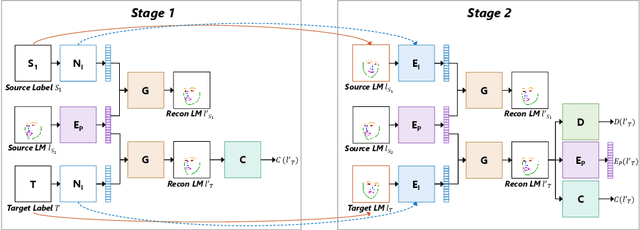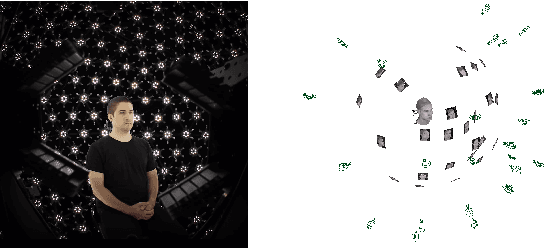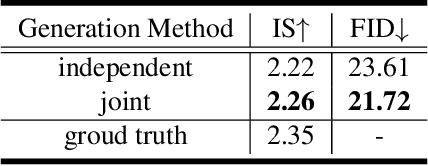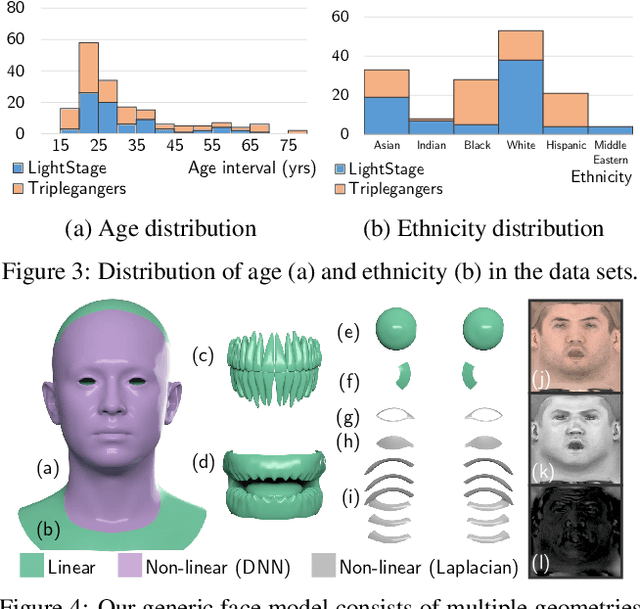Pengda Xiang
Texturize a GAN Using a Single Image
Mar 11, 2023



Abstract:Can we customize a deep generative model which can generate images that can match the texture of some given image? When you see an image of a church, you may wonder if you can get similar pictures for that church. Here we present a method, for adapting GANs with one reference image, and then we can generate images that have similar textures to the given image. Specifically, we modify the weights of the pre-trained GAN model, guided by the reference image given by the user. We use a patch discriminator adversarial loss to encourage the output of the model to match the texture on the given image, also we use a laplacian adversarial loss to ensure diversity and realism, and alleviate the contradiction between the two losses. Experiments show that the proposed method can make the outputs of GANs match the texture of the given image as well as keep diversity and realism.
DisUnknown: Distilling Unknown Factors for Disentanglement Learning
Sep 16, 2021



Abstract:Disentangling data into interpretable and independent factors is critical for controllable generation tasks. With the availability of labeled data, supervision can help enforce the separation of specific factors as expected. However, it is often expensive or even impossible to label every single factor to achieve fully-supervised disentanglement. In this paper, we adopt a general setting where all factors that are hard to label or identify are encapsulated as a single unknown factor. Under this setting, we propose a flexible weakly-supervised multi-factor disentanglement framework DisUnknown, which Distills Unknown factors for enabling multi-conditional generation regarding both labeled and unknown factors. Specifically, a two-stage training approach is adopted to first disentangle the unknown factor with an effective and robust training method, and then train the final generator with the proper disentanglement of all labeled factors utilizing the unknown distillation. To demonstrate the generalization capacity and scalability of our method, we evaluate it on multiple benchmark datasets qualitatively and quantitatively and further apply it to various real-world applications on complicated datasets.
One-Shot Identity-Preserving Portrait Reenactment
Apr 26, 2020



Abstract:We present a deep learning-based framework for portrait reenactment from a single picture of a target (one-shot) and a video of a driving subject. Existing facial reenactment methods suffer from identity mismatch and produce inconsistent identities when a target and a driving subject are different (cross-subject), especially in one-shot settings. In this work, we aim to address identity preservation in cross-subject portrait reenactment from a single picture. We introduce a novel technique that can disentangle identity from expressions and poses, allowing identity preserving portrait reenactment even when the driver's identity is very different from that of the target. This is achieved by a novel landmark disentanglement network (LD-Net), which predicts personalized facial landmarks that combine the identity of the target with expressions and poses from a different subject. To handle portrait reenactment from unseen subjects, we also introduce a feature dictionary-based generative adversarial network (FD-GAN), which locally translates 2D landmarks into a personalized portrait, enabling one-shot portrait reenactment under large pose and expression variations. We validate the effectiveness of our identity disentangling capabilities via an extensive ablation study, and our method produces consistent identities for cross-subject portrait reenactment. Our comprehensive experiments show that our method significantly outperforms the state-of-the-art single-image facial reenactment methods. We will release our code and models for academic use.
Learning Formation of Physically-Based Face Attributes
Apr 24, 2020



Abstract:Based on a combined data set of 4000 high resolution facial scans, we introduce a non-linear morphable face model, capable of producing multifarious face geometry of pore-level resolution, coupled with material attributes for use in physically-based rendering. We aim to maximize the variety of face identities, while increasing the robustness of correspondence between unique components, including middle-frequency geometry, albedo maps, specular intensity maps and high-frequency displacement details. Our deep learning based generative model learns to correlate albedo and geometry, which ensures the anatomical correctness of the generated assets. We demonstrate potential use of our generative model for novel identity generation, model fitting, interpolation, animation, high fidelity data visualization, and low-to-high resolution data domain transferring. We hope the release of this generative model will encourage further cooperation between all graphics, vision, and data focused professionals while demonstrating the cumulative value of every individual's complete biometric profile.
 Add to Chrome
Add to Chrome Add to Firefox
Add to Firefox Add to Edge
Add to Edge